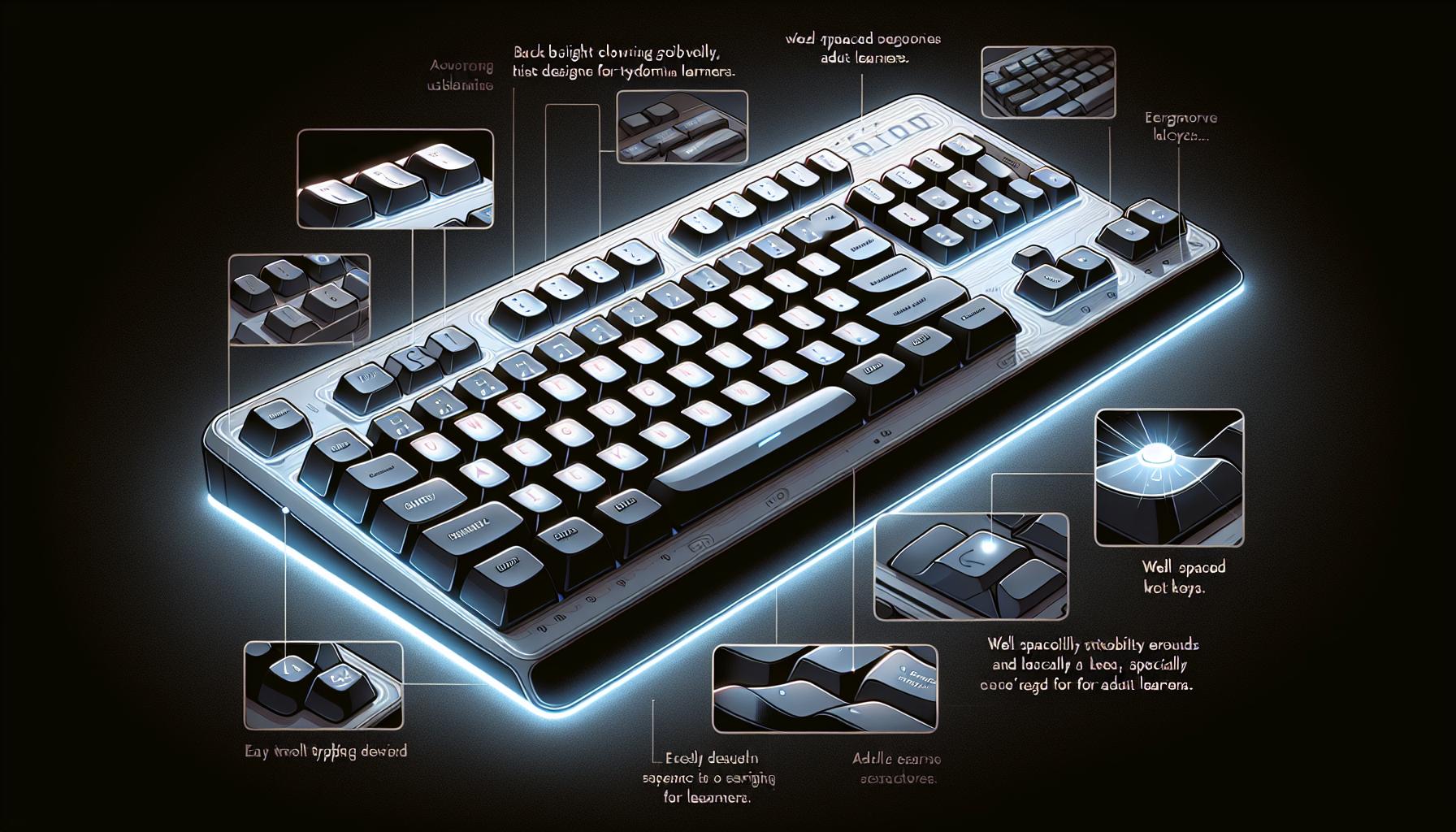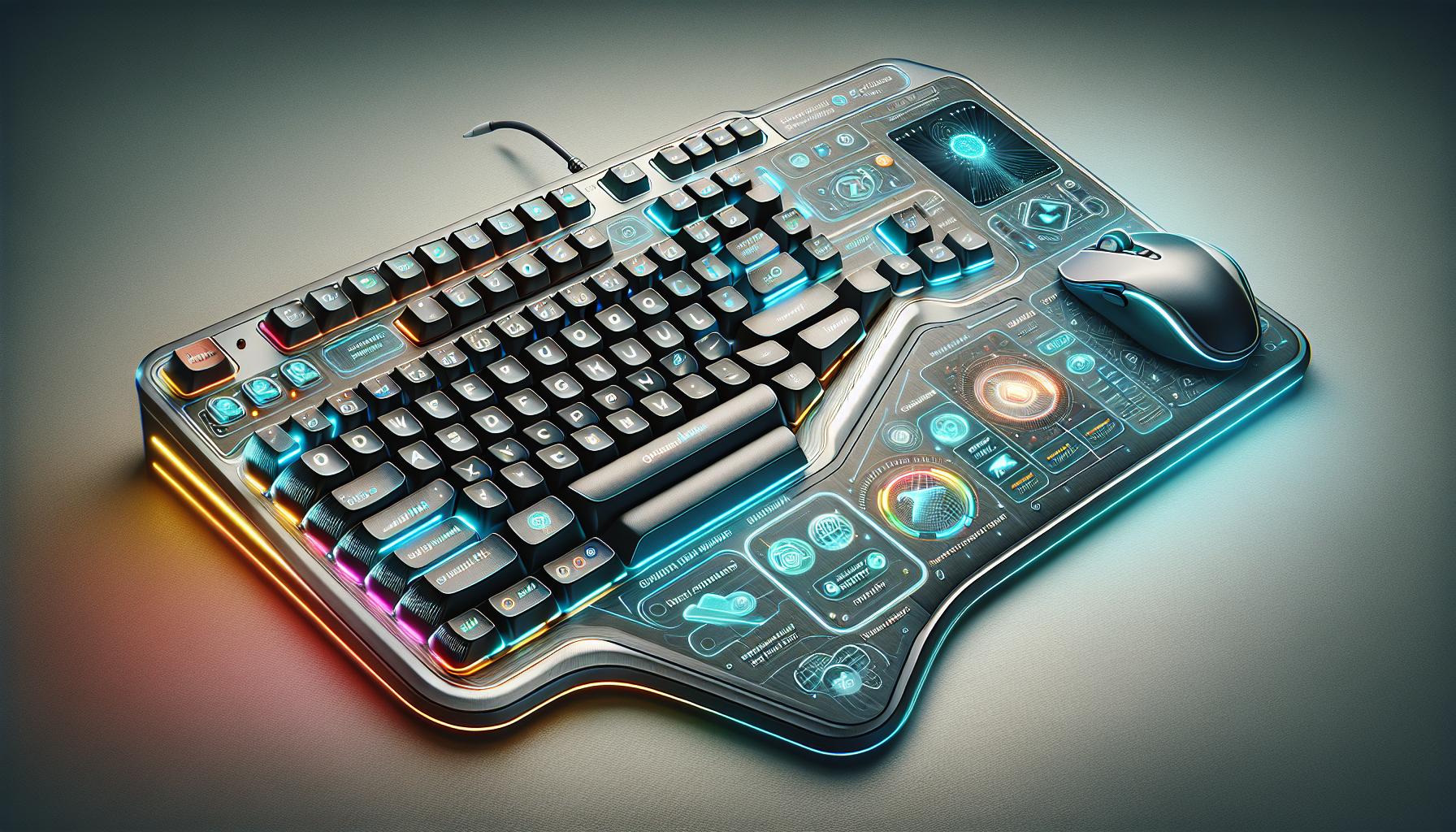In today's fast-paced world, many adults are turning to self-guided learning to pick up new skills, including mastering the keyboard. Whether it's for personal enjoyment, creative expression, or enhancing professional skills, learning to type efficiently is a valuable asset. But embarking on this journey without a teacher can seem daunting at first.
Thankfully, there's a plethora of keyboards designed with the adult learner in mind. These keyboards aren't just about fancy features; they're about making the learning process as smooth and enjoyable as possible. From ergonomic designs that prevent strain during long practice sessions to models with built-in software that guides you through each step, there's something for everyone.
Choosing the right keyboard can make all the difference in transforming a challenging task into an enjoyable learning experience. Let's dive into what makes these keyboards stand out and how they can help adults learn to type without the need for a traditional teacher.
Benefits of Self-Guided Learning
Self-guided learning offers a plethora of benefits for adults embarking on the journey to improve their typing skills. At its core, this approach empowers learners to tailor their study methods and schedules to fit their unique circumstances, leading to a more personal and effective learning experience.
Flexibility stands out as one of the most significant advantages. Adults lead busy lives, balancing work, family, and personal commitments. Self-guided learning allows them to practice typing when it's most convenient, whether that's early in the morning, during lunch breaks, or late at night. This flexibility ensures that learning becomes a part of their daily routine, rather than an additional burden.
Furthermore, self-guided learning caters to individual learning paces. Everyone learns at a different speed, and traditional classroom settings often fail to accommodate this diversity. Adults learning to type on their own can spend as much time as they need on difficult concepts without feeling pressured to keep up with peers. This personalized pace significantly reduces frustration and enhances the overall learning experience.
Another important benefit is the Immediate Feedback provided by modern typing software. Unlike traditional classrooms, where learners might wait days or even weeks for feedback, self-guided typing programs offer instant responses to each keystroke. This instant feedback loop enables learners to quickly identify and correct their mistakes, thereby accelerating the learning process.
Self-guided learning also fosters a sense of Independence and Responsibility in adults. Taking charge of their own learning journey instills a deeper level of commitment to mastering typing skills. This autonomy not only motivates them to persist in the face of challenges but also cultivates skills in self-discipline and time management that are valuable in both personal and professional spheres.
| Benefit | Description |
|---|---|
| Flexibility | Learners can practice typing based on their own schedules, fitting learning into their busy lives. |
| Individual Learning Paces | Adults can take the time needed to fully grasp typing techniques, reducing frustration. |
| Immediate Feedback | Typing software provides instant feedback, allowing for quick adjustment and learning. |
| Independence and Responsibility | Adults take control of their learning process, fostering motivation and self-discipline. |
Features to Look for in Keyboards for Adult Learners

When adults embark on the journey of self-directed learning, especially for skills like typing, choosing the right keyboard can make a significant difference in their progress and comfort. A well-selected keyboard can ease the learning curve, enhance typing speed, and reduce the risk of strain injuries. Here are some key features adult learners should consider when selecting a keyboard for their typing endeavors.
Ergonomic Design
One of the paramount considerations is an ergonomic design. Adults spending considerable time practicing their typing skills need a keyboard that supports their hands and wrists to minimize fatigue and prevent strain-related injuries. Ergonomically designed keyboards come in various shapes, such as split designs or those with a gentle slope, which help maintain a natural hand position.
Tactile Feedback
Keyboards with good tactile feedback play a crucial role in the learning process, as they allow learners to type more confidently. When keys provide a clear response upon being pressed, it helps in reinforcing muscle memory, crucial for mastering typing without looking at the keyboard. Look for keyboards that have a satisfying key press but aren't too stiff or too soft.
Adjustable Backlighting
For those who often find themselves practicing in dimly lighted environments, keyboards with adjustable backlighting can be immensely helpful. Being able to adjust the brightness ensures that the keys are visible without straining the eyes, which is particularly beneficial for lengthy practice sessions.
Key Label Durability
Since adult learners will be using the keyboard extensively to practice, the durability of the key labels is an essential factor. Keyboards that feature laser-etched or double-shot keys tend to have more durable labels that won’t fade away with heavy use. This ensures that even as learners get more adept at typing without looking at the keys, the labels remain intact for reference or occasional glances.
Key Layout and Size
The layout and size of keys should be considered for a comfortable typing experience. A standard layout with full-sized keys is generally recommended as it closely mimics the keyboards found in most workplaces, making the transition smoother. Additionally, keys that are too cramped can lead to more typos and slow down the learning process.
Ergonomic Design for Comfortable Typing Sessions

When adults embark on learning typing skills independently, comfort becomes a crucial factor that cannot be overlooked. An ergonomic keyboard, designed to minimize strain and discomfort, plays a pivotal role in ensuring that learners can practice for longer periods without feeling fatigued.
Ergonomic keyboards are crafted with the human body's natural posture in mind. They often feature a split design that allows for a more natural hand and arm position. This design reduces the risk of developing repetitive strain injuries (RSIs), such as carpal tunnel syndrome, which can be a significant setback in a learner's progress.
Another aspect of ergonomic design is the adjustable tilt and height features. Typists have different preferences when it comes to the angle of their wrists while typing. Keyboards that offer adjustable tilt and height ensure that every user can find a comfortable typing position. This adjustability is vital for preventing undue pressure on the wrists, further reducing the risk of discomfort or injury.
Cushioned or palm rests are additional features found in many ergonomic keyboards. They provide support for the palms and wrists, promoting a neutral wrist posture. By preventing the wrists from dropping too low or bending too high, these rests facilitate an optimal typing position, enhancing endurance and comfort over long typing sessions.
It's also worth mentioning the importance of key placement and size on ergonomic keyboards. Keys that are too close together or too small can cause unnecessary strain as typists stretch their fingers to reach them. Conversely, larger keys spaced at an optimal distance can help in reducing typing errors and increasing speed over time.
To illustrate the impact of ergonomic designs on learning efficiency and comfort, consider the following statistics from a survey of adults who switched to ergonomic keyboards for their self-directed typing practice:
| Feature | Percentage Reporting Improved Comfort |
|---|---|
| Split Design | 70% |
| Adjustable Tilt/Height | 65% |
| Cushioned Palm Rests | 80% |
| Optimal Key Layout | 75% |
These numbers highlight the tangible benefits of selecting a keyboard with an ergonomic design. Not only do learners find their sessions to be more comfortable, but they also experience a reduction in typing-related discomfort and injuries.
Built-in Software for Guided Learning

When embarking on the journey of self-taught typing, adults often seek not just comfort but also tools that can guide their progress. Built-in Software for Guided Learning becomes a crucial asset in keyboards designed for individuals learning without a teacher. This software offers structured lessons, real-time feedback, and engaging typing exercises tailored to improve typing speed and accuracy over time.
Manufacturers have started integrating these interactive learning tools directly into their ergonomic keyboards, recognizing the self-learner's need for continual improvement and guidance. These programs vary in complexity and features but share the common goal of making the learning process as efficient and enjoyable as possible.
Key Features of Learning Software
The embedded software typically includes a range of features designed to cater to adult learners at different skill levels:
- Interactive Lessons: Customizable lessons that adapt to the user's skill level, focusing on areas that need improvement.
- Progress Tracking: Tools that monitor typing speed, accuracy, and other metrics to show improvement over time.
- Gamification Elements: Engaging typing games and challenges that make learning fun and less tedious.
- Practice Tests: Simulated typing tests that help learners prepare for real-world typing scenarios.
Benefits for Adult Learners
The inclusion of built-in software in ergonomic keyboards offers several benefits for adults learning to type on their own:
- Self-Paced Learning: Learners can progress through lessons at their own pace, taking extra time on challenging aspects without the pressure of a traditional classroom setting.
- Immediate Feedback: Instant feedback on typing errors and suggestions for improvement helps in refining skills more rapidly.
- Increased Motivation: Gamification and progress tracking can significantly boost motivation, making learners more inclined to stick with their practice.
Choosing the Right Keyboard
When selecting a keyboard with built-in learning software, it's essential to consider the following:
- Software Compatibility: Ensure the software is compatible with your operating system.
- Customization Options: Look for keyboards that offer customizable learning paths and exercises.
- Ergonomic Features: Don't overlook the importance of ergonomic design, as comfort is key in long typing sessions.
| Keyboard Model | Software Features | Ergonomic Design |
|---|---|---|
| Model A | Interactive lessons, progress tracking | Split design, adjustable |
| Model B |
Conclusion
Choosing the right keyboard is crucial for adults embarking on the journey of learning to type independently. Ergonomic keyboards equipped with built-in software for guided learning offer a comprehensive solution that supports self-learners in developing their typing skills efficiently. They're not just about comfort; they're about making learning interactive, enjoyable, and tailored to an individual's pace. With the right keyboard, adult learners can enjoy the journey of improving their typing speed and accuracy, ensuring they remain motivated and engaged every step of the way. So when you're ready to take your typing skills to the next level without a teacher by your side, consider a keyboard that's designed to be your guide.
Harlan Kilstein began playing piano during covid with no piano background at all. He taught himself how to play learning what to do and what not to do.
Today he's an advanced intermediate player and can help you grow in your skills because he learned all this on his own.








